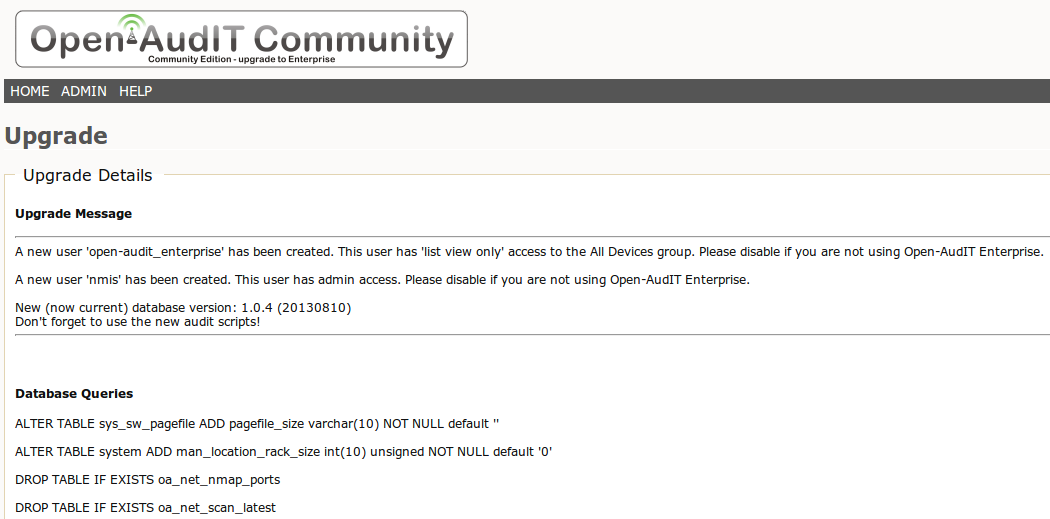Prerequisites
The individual performing this installation has some Windows experience.
Administrator level server access.
Pre-requisites are installed as per the Windows - pre-requisites guide.
NOTE - This guide is for upgrading an existing installation of Open-AudIT. If you wish to install Open-AudIT on a new system, see the Windows - Installing guide.
NOTE - AntiVirus Software. If you have AntiVirus software running, allowing the services of Opmantek (omkd), Apache (apache2.2) and MySQL (mysql) to auto start and run is essential. These services are used by Open-AudIT. You should only need to do this once. If your AntiVirus program keeps prompting you about Open-AudIT, please post to the forums or send an email to support with the name and version of your AntiVirus software.
Installation Steps
The downloaded package should be run as administrator (Right click the file and select "Run as administrator").
Accept the Windows UAC prompt.
Accept the license agreement by clicking "I Agree", "Install", "Next", "Close".
You will now have three new services installed - omkd, apache2.2 and mysql. The omkd service is used to run the Open-AudIT Enterprise service. Apache and MySQL are used by the XAMPPlite bundle.
Your original Open-AudIT directory (c:\xampplite\open-audit) will have been moved to c:\xampplite\open-auditYYYYMMDDHHMMSS.
Copy your files (if you had any) from your now backed up directory to c:\xampplite\open-audit\code_igniter\application\attachments as well as the c:\xampplite\open-audit\code_igniter\application\ (groups or reports).
You should now be able to browse to http://localhost/ and receive an Open-AudIT logon page.
If you are an Open-AudIT Enterprise user, you may wish to click the link and enter your license details.
Log on to Open-AudIT as a user with Admin access and you should see a prompt for you to upgrade the Open-AudIT database. Click on this (or click Help -> About).
Click the red upgrade link.
You will see two new users created, along with the usual database changes.
That's it - you're good to go. Open-AudIT is installed and working
As always, make sure you use the new audit scripts.



